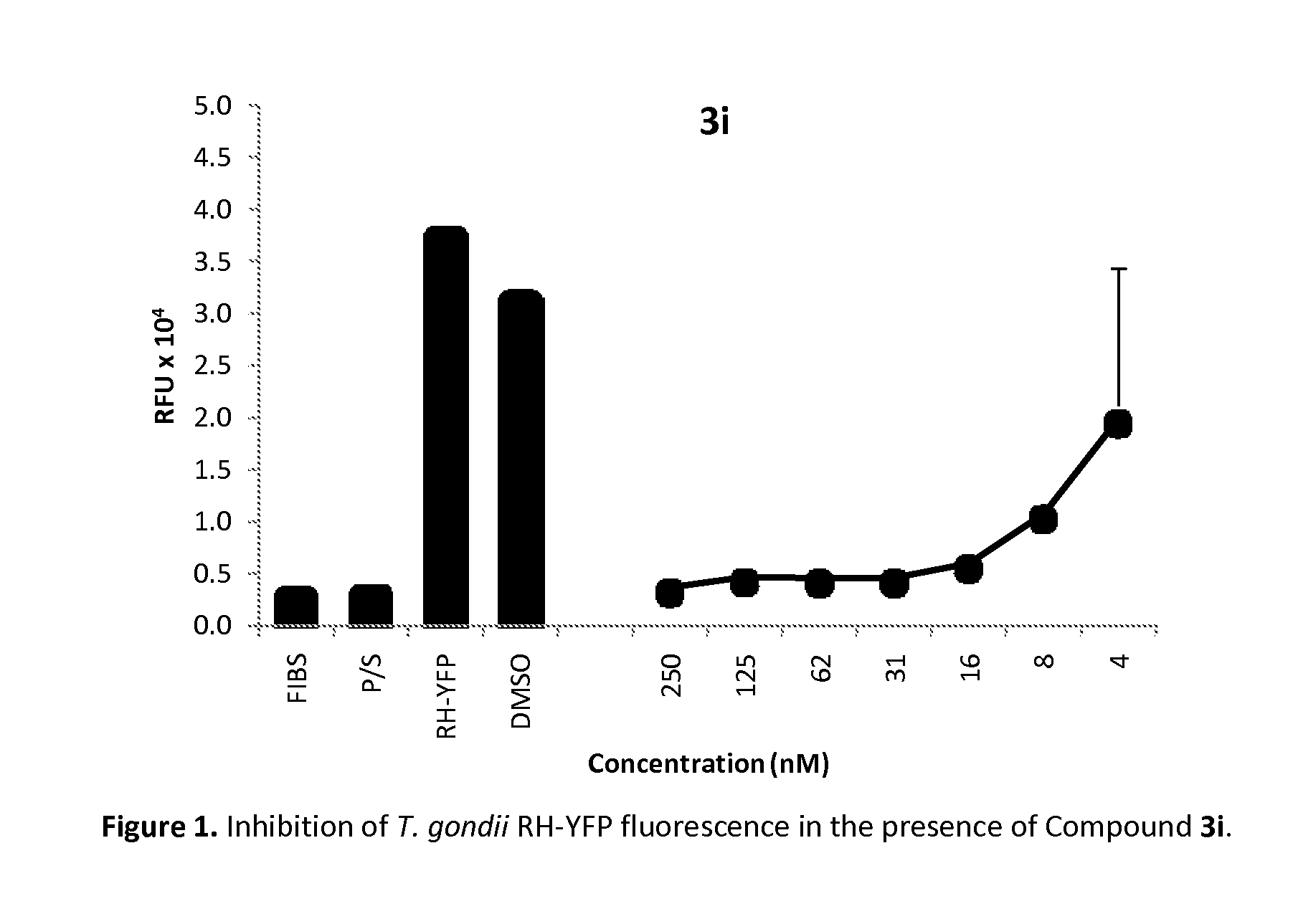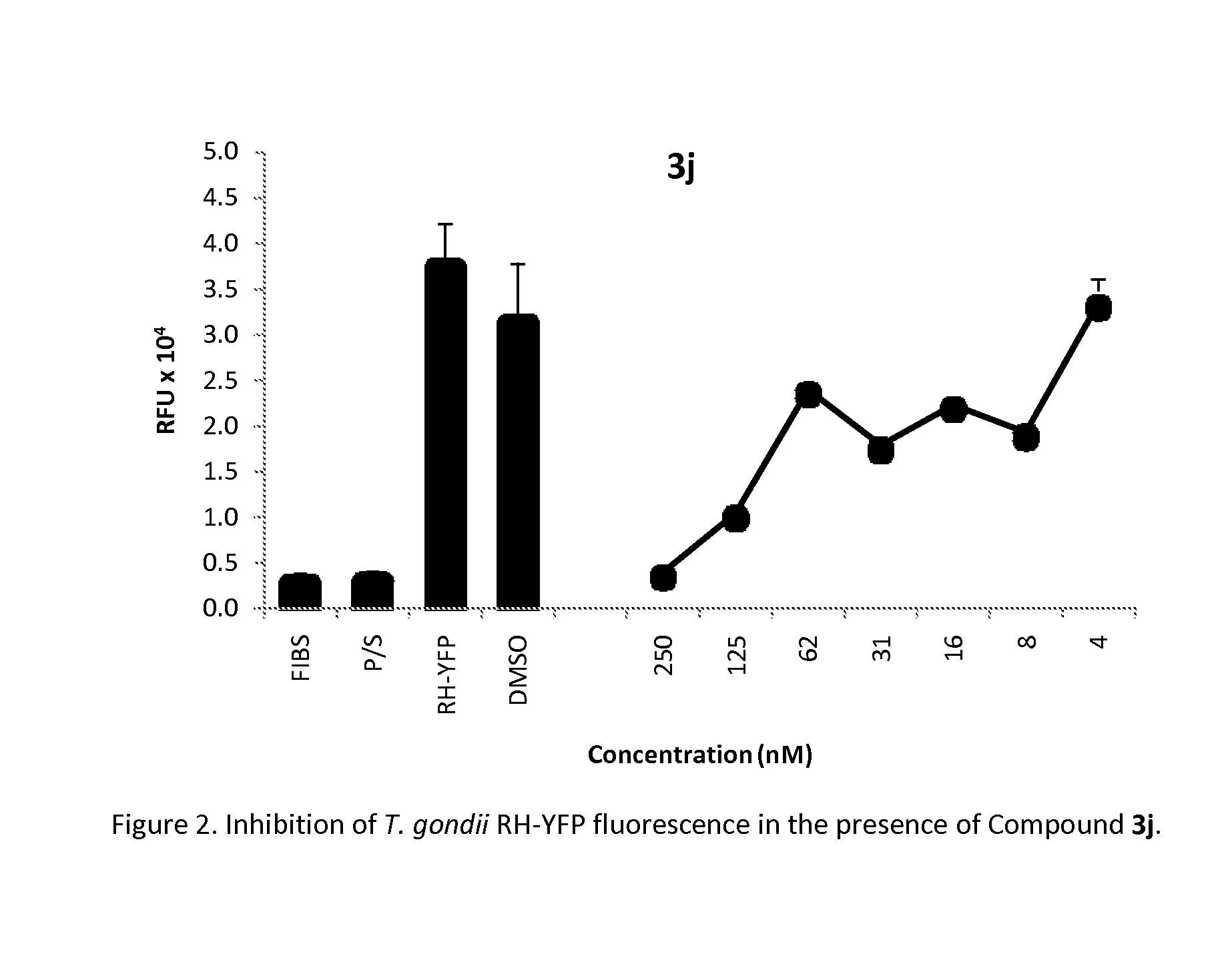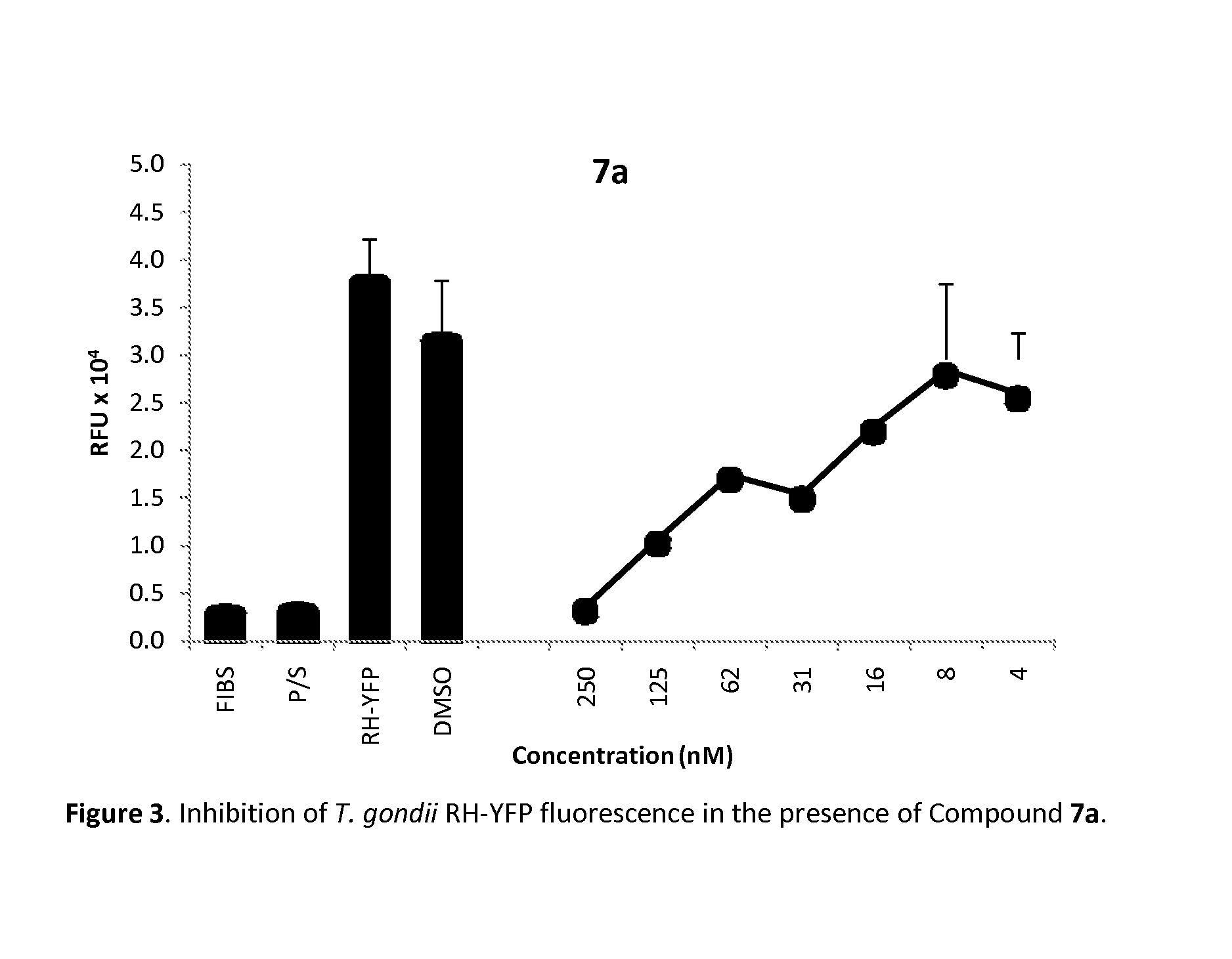Method of use of pharmaceutical formulations for the treatment of apicomplexan diseases in animals
a technology of apicomplexan and pharmaceutical formulations, applied in the field of preparation and use of pharmaceutical formulations for the treatment of apicomplexan diseases in animals, can solve the problems of low patient compliance, less than optimal efficacy, and large morbidity and mortality
- Summary
- Abstract
- Description
- Claims
- Application Information
AI Technical Summary
Benefits of technology
Problems solved by technology
Method used
Image
Examples
example 1
N-(3-bromophenyl)-5-chloro-2-hydroxybenzamide (3b)
[0082]Using the method described for compound 3a, 5-chlorosalicylic acid (0.57 g, 3.30 mmol) reacted with 3-bromoaniline (0.36 mL, 3.30 mmol) and 2M PCl3 in CH2Cl2 (0.66 mL, 1.32 mmol) in xylenes (8 mL). The crude product was recrystallized from EtOAc / hexanes. 1H NMR (500 MHz, DMSO-d6) δ 7.024 (m, 2H), 7.354 (m, 3H), 7.474 (m, 1H), 7.660 (m, 1H), 7.895 (m, 1H), 8.056 (s, 1H), 10.482 (s, 1H). HPLC TR 2.84 min; m / z+ 327.85 [M+H]+; m / z− 325.75 [M−H]−, (EM 324.95).
example 2
N-(3-ethylphenyl)-5-chloro-2-hydroxybenzamide (3c)
[0083]Using the method described for compound 3a, 5-chlorosalicylic acid (0.63 g, 3.65 mmol) reacted with 3-ethylaniline (0.45 mL, 3.65 mmol) and 2M PCl3 in CH2Cl2 (0.73 mL, 1.45 mmol) in xylenes (9 mL). The crude product was recrystallized from EtOAc / hexanes. 1H NMR (400 MHz, DMSO-d6) δ 1.198 (t, J=7.6 Hz, 3H), 2.618 (q, J=7.6 Hz, 2H), 7.012 (m, 2H) 7.254 (m, 1H), 7.457 (m, 3H), 7.983 (m, 1H), 10.357 (s, 1H). HPLC TR 2.86 min; m / z+ 275.95 [M+H]+; m / z− 273.80 [M−H]−; (EM 275.07).
example 3
N-(3-(trifluoromethyl)phenyl)-5-chloro-2-hydroxybenzamide (3f)
[0084]Using the method described for compound 3a, 5-chlorosalicylic acid (2.19 g, 12.69 mmol) reacted with 3-trifluoromethylaniline (1.58 mL, 12.69 mmol) and 2M PCl3 in CH2Cl2 (2.54 mL, 5.08 mmol) in xylenes (32 mL). The crude product was recrystallized from EtOH. 1H NMR (500 MHz, DMSO-d6) δ 7.035 (d, J=9.0 Hz, 1H), 7.488 (m, 2H), 7.619 (dd, J=8.0, 8.0 Hz, 1H), 7.934 (m, 2H), 8.209 (s, 1H), 10.624 (s, 1H). HPLC TR 2.843 min; m / z+ 315.90 [M+H]+; m / z− 628.80 [2M−H]−, 314.80 [M−H]−, (EM 315.03).
PUM
| Property | Measurement | Unit |
|---|---|---|
| time | aaaaa | aaaaa |
| temperature | aaaaa | aaaaa |
| pH | aaaaa | aaaaa |
Abstract
Description
Claims
Application Information
 Login to View More
Login to View More - R&D
- Intellectual Property
- Life Sciences
- Materials
- Tech Scout
- Unparalleled Data Quality
- Higher Quality Content
- 60% Fewer Hallucinations
Browse by: Latest US Patents, China's latest patents, Technical Efficacy Thesaurus, Application Domain, Technology Topic, Popular Technical Reports.
© 2025 PatSnap. All rights reserved.Legal|Privacy policy|Modern Slavery Act Transparency Statement|Sitemap|About US| Contact US: help@patsnap.com



